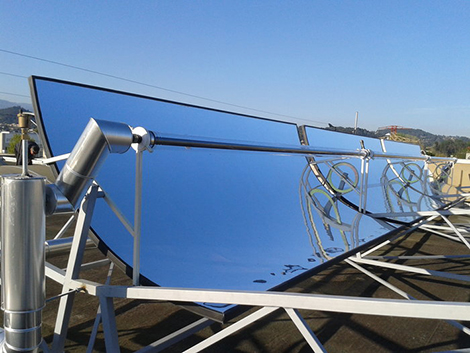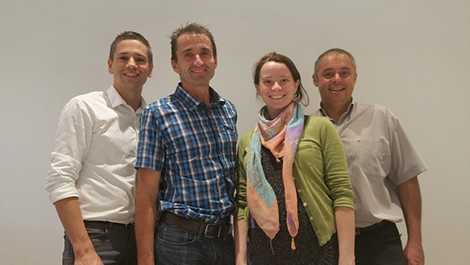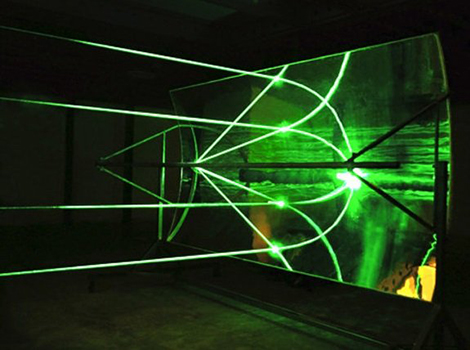
Helioclim’s solar collector for their zero-emission air-conditioning system turns to follow the Sun
The European Space Agency (ESA) has announced that four of its space engineers have created a ‘zero-emissions’ air-conditioning system that doesn’t pollute the atmosphere when turned on.
Using sunshine instead of electricity to power air conditioning and central heating, their system can also cool fridges and heat water.
Marie Nghiem, Yannick Godillot, Yann Vitupier and Charles Daniel worked at Thales Alenia Space in Cannes, France, on sophisticated satellites such as ESA’s Goce gravity-mapper and and Europe’s Jason ocean-monitors.

Based on their expertise from developing satellite thermal control and cooling systems, Yann Vitupier, Charles Daniel, Marie Nghiem and Yannick Godillot founded Helioclim
Determined to reduce energy consumption, the team drew on their skills in thermal engineering for satellites and their experience of rigorous testing.
The result is the Helioclim air-conditioning system
“It’s important to understand that we are not generating electricity from solar panels to power traditional air conditioning machines,” stresses Nghiem. “Instead, we are using the Sun’s thermal energy to heat water inside the units and reach the required temperatures.”
Nghiem adds that although a small number of other companies are also designing solar thermal systems, what makes the Helioclim version unique is that it can provide cooling down to –60°C and heating up to +200°C.
“Building a spacecraft is unusually complex,” she continues. “It must function perfectly for 15 years, so our standards have to be extremely high.
“We leave nothing to chance and we test every component meticulously to make sure it will stand the test of time, even in the harshest conditions.”

The parabolic shape of a solar trough concentrates sunlight onto a receiver that circulates a fluid to be used in Helioclim’s zero-emission air-conditioning system
Cooling with sunshine sounds odd, but uses a system of curved solar mirror-troughs spread across a building’s roof to concentrate the sun’s power on to tubes to heat water to 200°C.
This pressurised water enters another unit to provide both hot and cold water – and how it does that remains confidential. The emerging water can be set at anywhere between –60°C and +65°C, which is then circulated to create the required temperatures for the different parts of the building.
Below zero, a water–ammonia mixture is used as the refrigerant.
It can connect with the building’s existing chilled and hot water systems and functions even on a cloudy day thanks to stored energy, or power from other sustainable sources like biomass.






